–
There has recently been some discussion of history repeating itself in the subprime auto lending market. And while that is a legitimate concern, it is important to put that in context of those actual meltdowns.
History of Subprime Meltdowns
In the early 1990s, the subprime auto lending market boomed as Wall Street embraced subprime auto loans as a high-growth opportunity. Lenders targeted borrowers with poor credit histories, offering loans at high interest rates (often 20-30%) to compensate for default risks.
Key innovations included securitization, where loans were bundled into asset-backed securities (ABS) and sold to investors, allowing lenders to offload risk and expand rapidly. This led to hundreds of new subprime lenders entering the market, with over 20 initial public offerings (IPOs) between 1991 and 1994.
Prominent companies included Credit Acceptance (founded in 1972), Ugly Duckling (later DriveTime), which popularized “buy here, pay here” (BHPH) dealerships, and independent finance firms like Mercury Finance. Annual issuance of auto ABS grew from around $70 billion in 2000 to $106 billion by 2005, reflecting the sector’s peak expansion.
But then it all came crumbling down. The tipping point came in 1997, often called “the year of the bankruptcies” in the industry.
–
1997-1998
The 1997-1998 wave of the subprime auto loan meltdown saw numerous public and private finance companies collapse due to accounting irregularities, rising defaults, and liquidity crises. While not all “closed” immediately, many filed for Chapter 11 bankruptcy, leading to liquidation or restructuring that effectively ended operations.
Below is a list of notable ones based on historical records, focusing on those that sought bankruptcy protection or experienced catastrophic failure during this period.
Mercury Finance Co. – $1 billion in assets (1997) – The largest independent subprime auto lender at the time, it disclosed major accounting irregularities in January 1997, causing its stock to plummet over 93%. It filed for bankruptcy shortly after and liquidated, marking the start of the wave.
Western Fidelity Funding Inc. – Assets Not publicly specified (1997) – A Denver-based subprime auto lender that filed for Chapter 11 bankruptcy in August 1997, becoming the fourth major filing that year amid severe liquidity issues.
Reliance Acceptance Group Inc. – $500-800 million in assets (1997-1998) – Filed for bankruptcy in early 1998 after a 98% stock decline in 1997; it was one of the hardest-hit public companies and ceased operations post-filing.
Search Financial Services Corp. – $200-400 million in assets (1997-1998) – An early 1998 bankruptcy filer, following massive stock losses (over 90%) in 1997 due to underestimated loan losses and defaults.
First Enterprise Financial Group Inc. – $300-500 million (1997-1998) in assets – Filed for Chapter 11 in early 1998 as part of the ongoing crisis, unable to sustain operations amid rising delinquencies.
Other companies like First Merchants Acceptance Corp. experienced near-total stock wipeouts (99.8% decline in 1997) but managed to avoid formal bankruptcy through restructuring; however, they effectively exited the subprime auto lending space. This wave affected 24 of 26 public subprime auto finance companies, leading to a sector contraction.
The crisis was triggered by a combination of factors:
Overexpansion and Lax Standards: Intense competition led to weakened underwriting, with lenders approving loans to increasingly risky borrowers. Some dealers inflated borrowers’ incomes on applications to secure approvals, sometimes without the borrowers’ knowledge.
Accounting Irregularities and Fraud: Many companies engaged in aggressive accounting to inflate earnings, hiding rising defaults. This created a false sense of stability for investors.
Economic Pressures: The post-dot-com recession in the early 2000s, combined with rising unemployment, made it harder for subprime borrowers to repay loans. Default rates spiked as economic conditions worsened.
Securitization Risks: While securitization fueled growth, it also obscured underlying loan quality, leading to overleverage when defaults rose.
–
2007-2009 Great Recession Spillover
The subprime mortgage meltdown triggered a credit freeze and recession, hitting auto lending hard. Subprime auto delinquencies soared past 20% by 2009, exceeding mortgage default rates at times, as unemployment hit 10%.
Lenders had loosened standards pre-crisis (e.g., longer loan terms over 60 months rose from 36% in 2002 to 83% by 2008), but the downturn exposed overleveraged portfolios. Securitization halted briefly, with auto ABS issuance dropping 50% from 2007 peaks.
Key Events: No single “wave” of bankruptcies, but major strains included:
- WFS Financial (a subprime specialist) filed for bankruptcy in 2008 after defaults eroded its $2-3 billion portfolio.
- GMAC (now Ally Financial), a captive lender with heavy subprime exposure, nearly collapsed and required a $17.2 billion bailout in 2008-2009.
- Other lenders like Capital One Auto Finance scaled back subprime originations by 30-40%. Fraud cases emerged, similar to 1997, with dealers inflating incomes.
Impacts – Repossessions jumped 50%, leading to a glut of used vehicles and price drops of 10-15%. Borrowers faced credit ruin, and the sector shed jobs. Unlike mortgages, auto loans recovered faster due to their shorter terms (3-7 years) and collateral value (cars depreciate but can be repossessed easily).
Scale: Subprime auto debt contracted 25-30% from $150 billion in 2007 to under $110 billion by 2010; overall losses estimated at $20-30 billion.
–
2022-2025 – Post-Pandemic Delinquencies
Context and Causes: Pandemic stimulus and supply chain issues inflated car prices (up 40% from 2020), leading to $1.7 trillion in total auto debt by 2024. Subprime lending boomed with loose standards, but inflation, high rates (Fed funds at 5.25-5.50%), and job market cooling pushed delinquencies to records: 5.9% overall and 6.6% for subprime by early 2025, surpassing 2008 peaks. Longer loans (72+ months now 40% of originations) and deep subprime (FICO <550) exposure amplified risks.
Key Events: To date, the most recent meltdown is the 2025 collapse of Tricolor Holdings, a major subprime lender (assets/liabilities $1-10 billion):
- Filed for Chapter 7 liquidation bankruptcy on September 10, 2025, amid fraud allegations (e.g., falsified loan docs) investigated by the DOJ and banks like Fifth Third.
- Impacted investors including JPMorgan, Barclays, and BlackRock via $2 billion in ABS; even AAA-rated pools traded at distressed levels (50-70% losses).
- Other strains: Carvana faced short-seller scrutiny in 2023-2024 for 44% non-prime loans, leading to stock drops; Ally Financial cut subprime exposure in 2024.
- Broader: Delinquencies hit 5%+ in 2024-2025, with repossessions up 25% YoY.
Impacts: Tighter credit for subprime borrowers (e.g., higher down payments, rates 18-25%); potential ABS market contraction. Unlike 2008, car values are stable/rising, limiting systemic risk, but it could slow auto sales by 5-10%. Repossession volume from this sector of the auto lending world will likely remain elevated for many months to come.
Scale: Subprime delinquencies at 6.6% (highest since 1994); Tricolor alone represents only 1-2% of the $250 billion subprime market, but signals wider pain.
These events underscore recurring patterns: rapid subprime growth via securitization, followed by economic shocks triggering defaults. Reforms post-2008 (e.g., CFPB oversight) have mitigated severity, but risks persist with $250+ billion in outstanding subprime auto debt. The 2025 Tricolor case echoes the1997-1998 meltdown but is more isolated.
So, are we seeing history repeating itself? It’s probably too early to say, but there are many signs pointing to it if you follow Bill Ploog on LinkedIn.
–
How Does this Effect My Credit Union
Historically, credit unions were well known for offering credit to those who otherwise would not be afforded it through traditional lending channels. For the most, those days are long gone. Credit union’s lending and underwriting standards have become pretty vanilla and fall in line with those of most prime tier lenders. So, why would the credit union industry be concerned?
Straw deals. As credit availability to subprime buyers and borrowers dries up, a heavy reliance on solid prime rate cosigners will often lead to unqualified borrowers falling off the applications and contracts. “Don’t worry, the lender will refinance it after three months.” And other lies will be told to these unwary applicants.
So, what credit unions and many lenders will find is a portfolio of hidden risk in the form of prime rate loans written at rates too low to accommodate the hidden subprime risks of the actual person paying for it.
Delinquency is bad enough these days. No one needs their lending department to pour in a whole new portfolio loaded with hidden risks that are not properly priced.
–
Have fun,
Kevin Armstrong
Publisher
Subprime Auto Loan Meltdown – Is History Repeating Itself? – Subprime Auto Loan Meltdown – Is History Repeating Itself? – Subprime Auto Loan Meltdown – Is History Repeating Itself?
Subprime Auto Loan Meltdown – Is History Repeating Itself? – Lending – Bankruptcy – Fraud – Auto Loan – Credit Union Collections – Credit Union Collectors – Repossession – Repossession – Repossess – Repossession – Repossession Agency – Repossessor


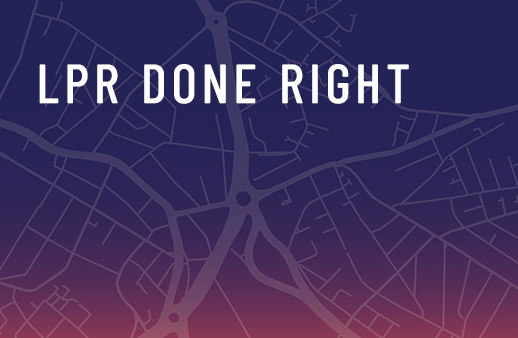
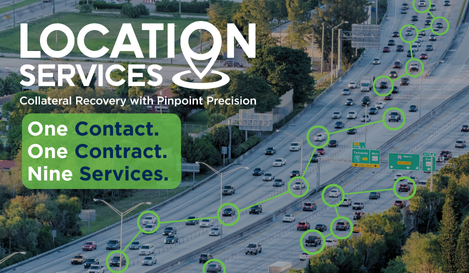
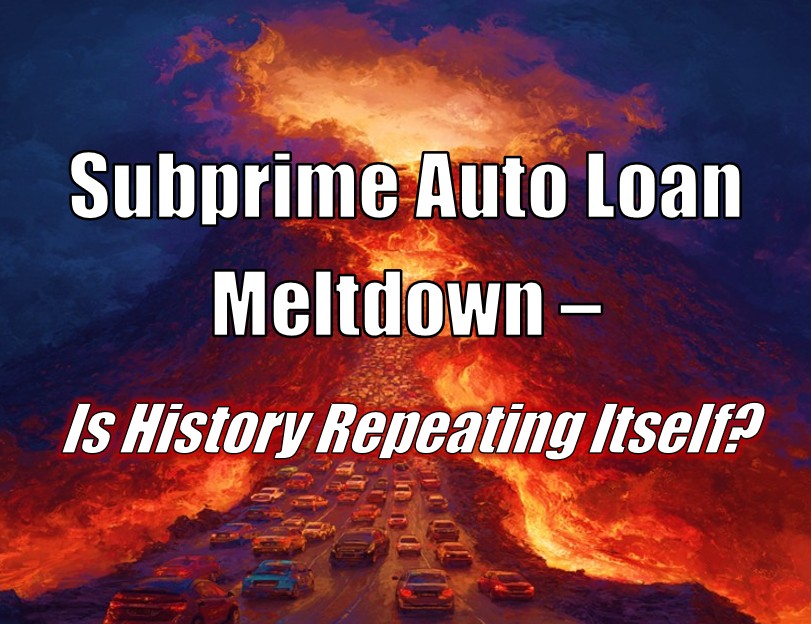

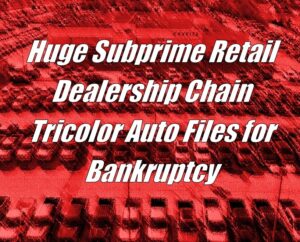

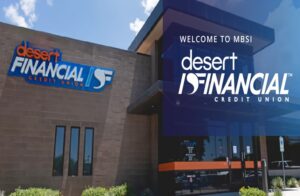
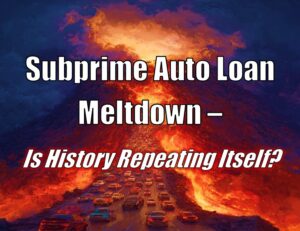




Facebook Comments